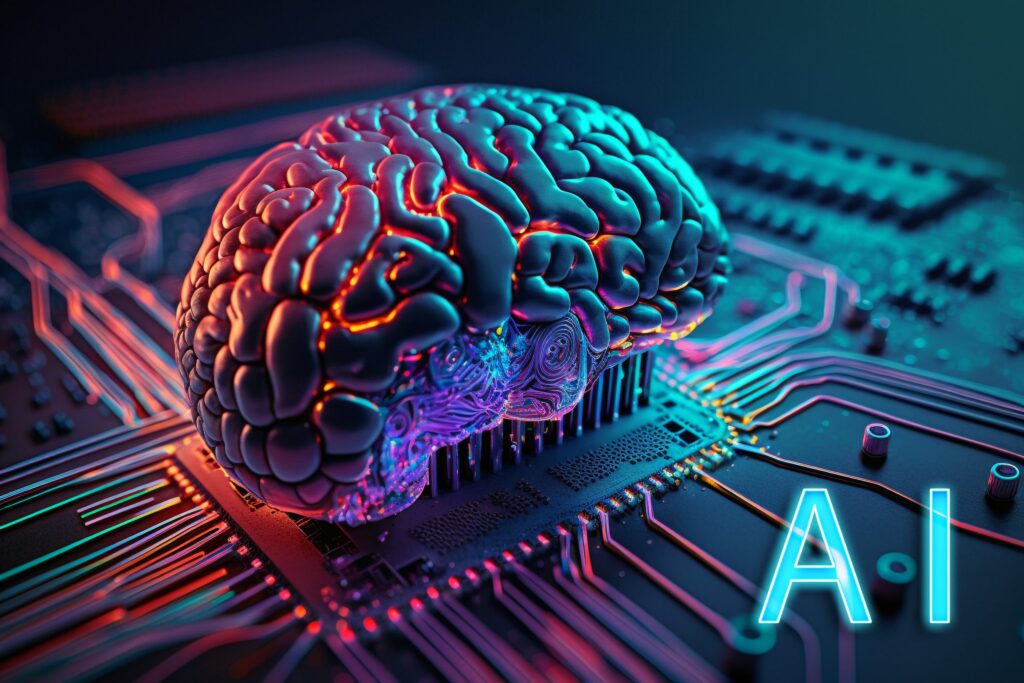Dive into the exciting intersection of artificial intelligence and marketing, as we demystify the complexities of this transformative technology. From reshaping marketing strategies to turbocharging progress, AI offers a myriad of opportunities. However, it’s not magic; the journey begins with tidying up data houses, assembling the right teams, and fostering a culture of transparency.
As we move into an era of hyper-personalized campaigns and AI-guided marketing, the future promises thrilling possibilities for those who embrace AI thoughtfully. The AI marketing transformation is happening – are you ready to seize the moment?
The AI Marketing Movement
Artificial intelligence is reshaping the marketing landscape, yet its application calls for thoughtful deliberation. Before diving into AI, marketers need to tidy up their data, structuring and consolidating it meticulously. Once a robust data foundation is established, AI algorithms can then sift through this information to yield valuable insights, enhancing our understanding of customers.
Artificial intelligence is reshaping the marketing landscape, yet its application calls for thoughtful deliberation. Before diving into AI, marketers need to tidy up their data, structuring and consolidating it meticulously. Once a robust data foundation is established, AI algorithms can then sift through this information to yield valuable insights, enhancing our understanding of customers.
Companies like Netflix and Spotify are testament to the power of AI, harnessing machine learning to offer highly personalized recommendations. However, AI is not a magic bullet. Even the most sophisticated algorithms depend on high-quality data and require stringent governance to ensure their recommendations are ethically sound and align with company values.

When built upon a solid data infrastructure and governance, AI equips marketers with the tools to optimize budget allocation, anticipate customer churn, tailor messaging, and generate innovative creative concepts. Initial AI applications aim to enhance human capabilities, not replace them. Algorithms are adept at swiftly processing vast datasets, while marketers contribute their creativity, empathy, and ethical judgement.
This blend of human and machine offers thrilling possibilities. However, to maximize outcomes, marketers should start small. Modest, controlled AI tests often yield better results than costly, broad deployments. Marketers should refrain from relinquishing full creative control to algorithms without supervision. Human oversight is essential to guide AI outputs, check for bias, and ensure brand alignment.
While AI introduces new capabilities, the bedrock of quality marketing remains the same. Technology aids but does not replace strategic clarity. Before embracing AI, marketers must anchor their efforts in a clear vision and purpose. Technical complexity should not overshadow the fundamental goal of forging authentic customer connections. AI is not a cure-all, but a toolkit. When paired with human creativity on a solid foundation, AI can enhance marketing capabilities. The future is promising for those who adopt AI thoughtfully.
The Dawn of AI in Marketing
Marketing technology has been on a steady rise over the past decade, equipping marketers with unprecedented data and insights. Artificial intelligence is set to turbocharge this progress. Even though it’s still in its infancy, AI has already demonstrated a vast potential to bolster marketing strategies and deliver value to consumers.
The statistics are compelling. An estimated $6 billion has been poured into marketing AI startups globally since 2016. Experts forecast that companies could experience an average 20% surge in cash flow by deploying AI tools. Early adopters have already reaped the benefits. For instance, beauty brand Clarins reported a 13% rise in email revenue after deploying an AI-powered campaign manager. Moreover, AI-optimized web content can elevate conversion rates by up to 150%.

Get more AI + Marketing news
Despite these promising figures, some marketers are still hesitant or daunted by the concept of AI. Only around 37% of marketers have incorporated AI in some form. Others express worries over data quality, technical skills, or the challenge of measuring ROI. However, those skeptical of AI should realize its primary purpose is augmentation, not automation. AI is designed to work in tandem with marketers, not replace them, enhancing their capabilities.
Brands that welcome this human-machine collaboration are now poised to gain an edge. They can utilize AI to delve deeper into consumer insights for more pertinent engagement. AI equips marketers to create tailored brand experiences on a large scale. It also facilitates testing and optimization at a speed previously unattainable. Like any tool, the effectiveness of AI hinges on the human talent steering it. However, those willing to delve into its potential now can gain a head start in reshaping marketing strategies before AI becomes a standard in the industry.
The era of AI in marketing is upon us. Initial indications suggest it could play a transformative role in the future. A willingness to experiment and realistic expectations paves the best way forward. Even minor AI tests can equip teams with valuable insights to broaden their efforts and prepare their marketing function for future AI integration. The potential rewards make tackling the initial challenges worthwhile. Brands that seize this opportunity now can secure an AI advantage that yields benefits in the long run.
Get Your Data House in Order
Quality, integrated data is the cornerstone for successfully implementing AI in marketing. Without substantial datasets to feed algorithms, even the most sophisticated AI tools will falter.
Begin by evaluating your existing data. Record the types of first-party data you currently gather across various channels. This encompasses both structured data like customer information in your CRM and unstructured data like email subject lines or social media captions. Also, take note of third-party data assets you have access to, whether bought or freely available.
Then, pinpoint areas where obtaining more data could enhance algorithmic insights. This could involve implementing more tracking to monitor customer web or app behavior, or setting up feedback surveys to collect more direct input. The focus should be on acquiring high-value data linked to your business objectives, rather than indiscriminately accumulating more in hopes it may someday be useful.
Once your data is mapped, concentrate on consolidation. Merging isolated datasets into unified customer profiles offers a comprehensive view that boosts AI’s potential. Instead of algorithms analyzing fragmented data in channel-specific systems, aggregated data allows for the identification of broader trends and patterns. Thoughtfully determine which identifiers like name, email, or ID number can link records across data sources.
Cleaning and structuring data is also crucial so algorithms can accurately interpret the contents. Eliminate irregularities like typos or abbreviations and standardize formats, particularly for freeform qualitative data like text or audio. Adding metadata tags that categorize data types further assists algorithmic understanding.
Continuous governance ensures data quality remains high once consolidation is complete. Establishing processes for periodically reviewing and revising data reduces issues like outdated records or mislabeled categories. Documenting changes also aids downstream teams in understanding how datasets evolve over time.
While utilizing external data can generate unique insights, be cautious to avoid risky or unethical sources. Examine third-party data for potential bias or inaccuracies that could distort algorithmic outputs. Opt for providers with transparent collection policies that align with your brand values.
Building a robust data foundation requires initial effort but enables AI to scale successfully. With a wealth of high-quality data powering algorithms, the subsequent steps on your AI journey become more manageable. Invest the time to organize your data house before venturing into advanced analytics or automation. The investment will yield returns as your AI marketing strategy evolves.
Assemble the Brains Behind the Bots

Implementing AI is not as simple as plugging in a piece of software. Like any major technology initiative, it requires bringing in the right blend of talent to set your strategy and make it stick. As a leader embarking on an AI marketing journey, one of your first moves needs to be building an all-star team to steer ongoing education, ideation, and adoption across the organization.
Start by taking stock of existing analytics and technical marketing pros on staff who display curiosity for leveraging data in new ways. Chances are you have in-house employees interested in expanding skills to fuel AI algorithms. Offer training workshops and access to online courses to ramp up their data science and machine learning literacy. Giving current team members a path to reskill for AI projects improves retention too.
Supplement upskilling efforts with some fresh faces. Consider creating new roles like Analytics Translator, Algorithm Ethics Specialist and AI Marketing Strategist. The Translators act as liaisons between technical and creative teams to match marketing objectives with AI capabilities. The Ethicists institute audits and checks to ensure algorithmic models operate fairly. The Strategists constantly assess the competitive landscape for new AI applications to pilot.
When recruiting additional support, emphasize skills over specific job titles. Follow traits like statistical proficiency, computing languages fluency, cross-discipline collaboration and ethical reasoning over chasing rigid requirements. Stay open to transferable experiences from industries like finance, public sector, healthcare and education. The explosion of AI means talent pools still emerge from unexpected avenues.
Cast a wide net for your AI dream team but stay vigilant against unrealistic expectations. Not every member needs to have a computer science Ph.D. or Silicon Valley pedigree. A blend of soft skills like creativity, empathy and communication allow AI to mesh with existing processes. Some occasional gaps in technical prowess can be overcome with the right training resources too.
Making AI work alongside people instead of replacing them means considering more than raw computing power. Build teams with both data-driven and design-focused thinkers. Technical grounding keeps models accurate while creative influencers ensure they resonate with customers. Developing a collaborative culture around AI beats an isolated skunkworks approach.
With the right advisory assembly of data scientists, design experts and strategic leaders, AI becomes an opportunity to enhance marketing rather than overtake it. The ultimate litmus test for an AI dream team is whether its innovations solve customer problems rather than chase technology for its own sake. Align your talent framework to nurture AI for augmenting human intelligence, not attempting to replicate it.
The Magic of Customized Consumer Connections
Hyper-personalization, the ultimate goal of marketing, is now within reach thanks to AI, enabling genuine 1:1 consumer engagement on a grand scale. Machine learning algorithms are now capable of extracting insights from data to comprehend each customer as a unique individual. These algorithms can then craft messages that align perfectly with each individual’s interests, values, and preferences.
The secret lies in providing the algorithms with high-quality behavioral, demographic, and contextual data, enabling them to segment audiences into highly specific micro-groups. Some brands take personalization a step further by incorporating first-party data such as CRM information or transaction history. With rich datasets at their disposal, the algorithms can identify hidden patterns and create detailed consumer profiles.
It’s time to bid farewell to the “one-message-fits-all” strategy. Smart brands are now leveraging AI tools to pair the right content with the right customer at the right time. Personalized subject lines enhance open rates, individualized product recommendations boost conversions, and even tailored coupon codes can elevate order values.
When executed effectively, hyper-personalization makes consumers feel genuinely recognized and understood. Studies indicate that 77% of customers are more likely to make a purchase when brands present targeted, relevant offers. Thus, AI eliminates the guesswork in determining which message will resonate most with each micro-segment.
While the AI-powered personalization process from data to deployment does require specialized knowledge, several user-friendly platforms now make running hyper-personalized campaigns a breeze. With the right support, brands of all sizes can harness this strategy.
Establish Trust Through Transparency
Like any advanced technology, hyper-personalization brings up ethical concerns about consumer data collection and usage. Transparency is crucial – be clear about what data is collected and how it contributes to personalization. Offer options for customers to opt out of data sharing and targeted ads.
Proactive self-regulation can help sustain consumer trust in the long term. Industry groups like the Future of Privacy Forum provide guidelines for responsible AI and consumer privacy. With a thoughtful approach, the remarkable results enabled by hyper-personalization don’t have to compromise core brand values.
Embrace AI for Campaign Creation
AI-driven marketing tools have evolved from mere concepts to practical solutions that are ready for action. As this technology matures, more brands are relying on algorithms not just for data analysis, but also for generating entire creative campaigns.
This is a significant change – the automation of messaging that resonates with unpredictable consumers. However, early adopters have shown that AI is capable of handling this task. By adhering to a few essential guidelines, your marketing team can also begin to delegate campaign creation to intelligent machines.
Begin with Small, Focused Steps
Diving in headfirst across all campaigns can lead to unnecessary risks. Instead, identify a low-risk campaign or audience segment to test your AI creative director. Monitor performance closely, gather insights, and then expand usage more widely. Remember, striving for perfection can hinder progress when initially implementing new technology.
Feed the Algorithm Correctly
Even the most sophisticated algorithm is only as effective as the data used to train it. Provide a diverse range of successful past campaign elements – video clips, display ads, email subject lines, etc. This equips the AI with enough reference points to generate new creative combinations that resonate. Avoid the urge to feed only recent examples, as historical variety offers more perspectives.
Retain a Human Element
For the time being, completely hands-off campaign creation is probably too ambitious. However, AI can handle significant tasks like creating initial drafts to refine, rather than starting from scratch. Establish clear brand guidelines for tone, messaging, and visuals. Then, review AI outputs to select the best options and provide qualitative feedback to further enhance the algorithm’s efforts.
Watch Out for Message Drift
AI’s adaptability can result in a drift away from brand standards over time. Keep an eye out for subtle, cumulative shifts as the algorithm experiments with new creative styles to optimize engagement. Periodically analyze a sample set of machine-generated ads to catch drift before it becomes significant. This proactive approach helps maintain your brand identity.
The AI Marketing Transformation is Happening
Marketers who welcome this change with careful implementation are positioning themselves to succeed amidst the upcoming disruption. As AI capabilities become more robust, creative autonomy will increase, and human oversight will decrease. For now, smart brands are allowing algorithms to guide the way forward while maintaining some boundaries. The reward is increased marketing productivity and consumer engagement. By following the above guideposts, your brand can also start reaping these AI-powered benefits.
Embracing AI in marketing doesn’t mean abandoning human creativity or ethical considerations. With a strong foundation of data, the right blend of talent, and thoughtful management, AI can enhance personalization, streamline campaign creation, and foster stronger customer connections, reshaping the marketing landscape while maintaining its human essence.



